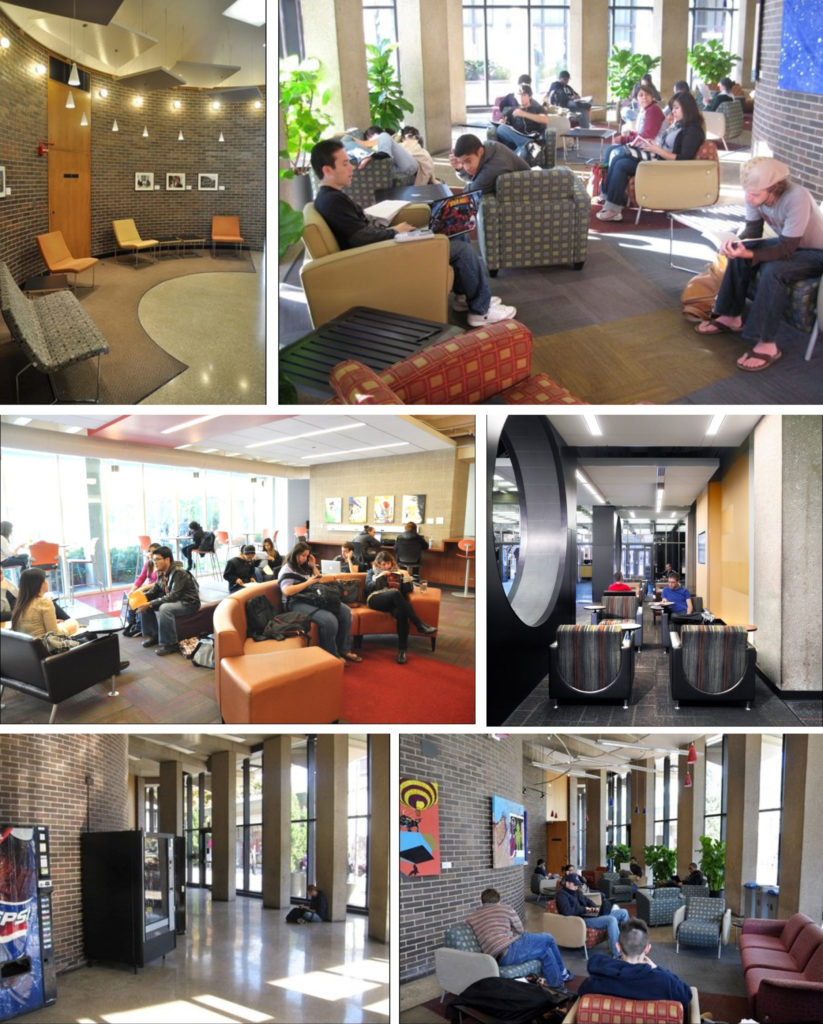- Can informal learning spaces become an integral part of the campus ecosystem for learning into the future?
- How does attention to informal learning spaces happen?
Start small. Think big.
From recent research and experience there is solid evidence that learning doesn’t happen at the classroom door, that an ecosystem of spaces is essential to support both formal and informal learning. How do campuses begin planning informal learning spaces?
- Make an informal institutional audit: identify opportunities for prototyping: lobbies, corridors, alcoves, entry vestibules.
- Look for places where students are currently waiting or sitting on the floor.
- Ask students to submit photos on spaces they think might be repurposed into learning spaces.
Start small but do something. Creating even the most informal, modest learning can make a difference for students. Then, once your pilot is up and running, assess it; identify successes and failures. Move forward, remembering this is an iterative process and don’t forget to involve the students—they have wonderful ideas!
At institutions of higher education we understand that learning doesn’t stop at the classroom door and that we need to provide an ecosystem of spaces to support both formal and informal learning. Informal learning spaces are often thought of as “between spaces” that provide students with opportunities outside the classroom for individual reflection, community building, and peer-to-peer learning. To be successful, these spaces require the same thoughtful planning we devote to formal learning spaces.
How does one begin planning informal learning spaces?
Join this conversation with David Taeyaerts, Associate Vice Chancellor of Learning Environments & Campus Architect (The University of Illinois at Chicago) at the LSC National Colloquium.

